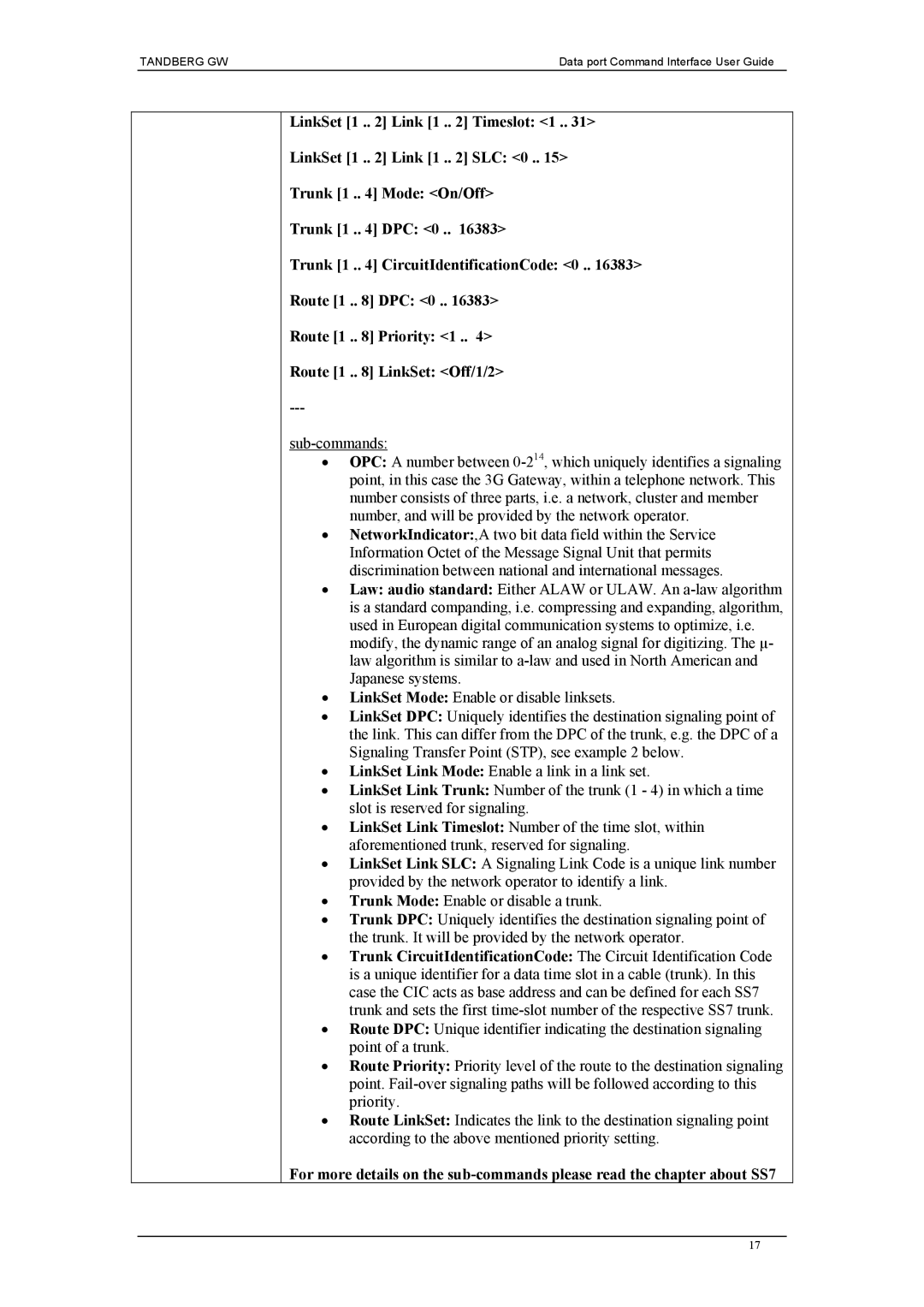
TANDBERG GW | Data port Command Interface User Guide |
LinkSet [1 .. 2] Link [1 .. 2] Timeslot: <1 .. 31>
LinkSet [1 .. 2] Link [1 .. 2] SLC: <0 .. 15>
Trunk [1 .. 4] Mode: <On/Off>
Trunk [1 .. 4] DPC: <0 .. 16383>
Trunk [1 .. 4] CircuitIdentificationCode: <0 .. 16383>
Route [1 .. 8] DPC: <0 .. 16383>
Route [1 .. 8] Priority: <1 .. 4>
Route [1 .. 8] LinkSet: <Off/1/2>
•OPC: A number between
•NetworkIndicator:,A two bit data field within the Service Information Octet of the Message Signal Unit that permits discrimination between national and international messages.
•Law: audio standard: Either ALAW or ULAW. An
•LinkSet Mode: Enable or disable linksets.
•LinkSet DPC: Uniquely identifies the destination signaling point of the link. This can differ from the DPC of the trunk, e.g. the DPC of a Signaling Transfer Point (STP), see example 2 below.
•LinkSet Link Mode: Enable a link in a link set.
•LinkSet Link Trunk: Number of the trunk (1 - 4) in which a time slot is reserved for signaling.
•LinkSet Link Timeslot: Number of the time slot, within aforementioned trunk, reserved for signaling.
•LinkSet Link SLC: A Signaling Link Code is a unique link number provided by the network operator to identify a link.
•Trunk Mode: Enable or disable a trunk.
•Trunk DPC: Uniquely identifies the destination signaling point of the trunk. It will be provided by the network operator.
•Trunk CircuitIdentificationCode: The Circuit Identification Code is a unique identifier for a data time slot in a cable (trunk). In this case the CIC acts as base address and can be defined for each SS7 trunk and sets the first
•Route DPC: Unique identifier indicating the destination signaling point of a trunk.
•Route Priority: Priority level of the route to the destination signaling point.
•Route LinkSet: Indicates the link to the destination signaling point according to the above mentioned priority setting.
For more details on the
17
